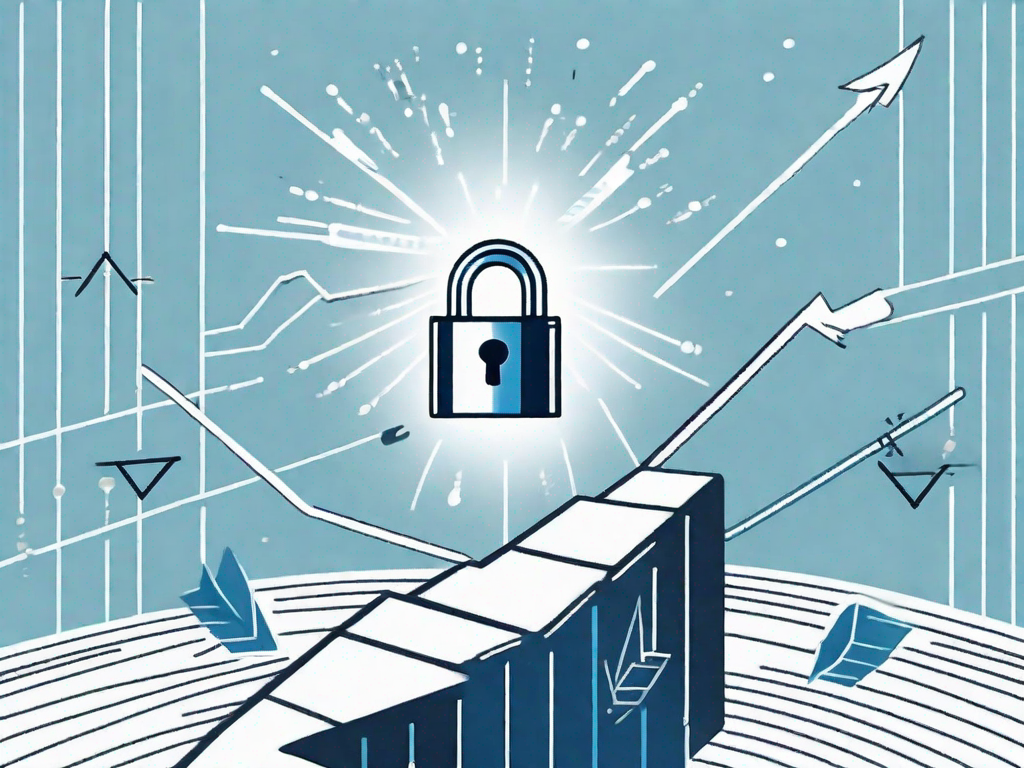Every trader has a battle.
In fact, many battles. But there’s one foe that is even more powerful than the market itself. And that is, a trader’s own self.
That might sound a little crazy, but that battle is well known to any experienced trader that has been able to conquer the market. Each of us has that voice in the back of our head that questions us when we trade. It often creates insecurity when we’re in the middle of a trade.
Perhaps you’ve been there. You’re in a trade, and you have defined targets and stops, and as the trade starts to move in your direction, you feel great. The “Yes! I’m right!” air of confidence appears, coupled with the excitement of getting richer by the moment as your trade moves in your direction. And then the market pauses. “I’m okay”, you think. “Be patient,” you tell yourself. But then it starts to turn back. As price moves back toward your entry, you watch the gains start to disappear, and then comes that voice. “Sell it now, sell it now! Before it goes negative.” In a moment of weakness, you close the trade with a small profit, way before your target, disregarding the rules that you had made for yourself.
This can be even more impactful for traders that perceive a loss to be devastating. This is why it’s critical that we trade with money that isn’t direly needed. The more important avoiding losses is to you, the harder it is to be emotionless in your trading.
It’s Almost Funny How Our Mind Works…
Remember having to write a dreaded term paper in school? We had to balance the pleasure of completing the assignment and getting it done with the pain of not getting it done at all, and getting an “F”. If pleasure was more powerful than avoiding pain, we would have completed our term papers early, well before the due date. But so many of us weren’t driven by the pleasure of crossing it off our to-do list. Instead, it was the threat of getting an “F” that drove us to complete it, and usually under pressure, at the last minute.
 That’s ok. We’re only human. But it illustrates how our mind works. We humans find the pain of losing is more powerful than the pleasure of winning. For this reason, traders often find themselves taking profits early, but letting their losers run all the way to their stop. By letting a trade run to the stop, we give it every chance of not losing. We’re typically more patient with a trade and give it room when it’s threatening the stop than when it’s inching toward the target.
That’s ok. We’re only human. But it illustrates how our mind works. We humans find the pain of losing is more powerful than the pleasure of winning. For this reason, traders often find themselves taking profits early, but letting their losers run all the way to their stop. By letting a trade run to the stop, we give it every chance of not losing. We’re typically more patient with a trade and give it room when it’s threatening the stop than when it’s inching toward the target.
But this can be disastrous in trading.
By taking profits early, and letting our losers run to their maximum, we are making trading so much harder than it needs to be. We can make it easier with a simple understanding. If we let our winners make twice what we risk, known as a 2:1 Reward to Risk ratio, one winner can balance out two losers. So, if we target making $200 per trade, with a risk of giving back $100 when we’re wrong, we are maintaining a 2:1 Reward to Risk ratio. Simplified, that means we only have to be right more than 1 out of three times to be profitable over the long term. With a 2:1 Reward to Risk ratio, we can be wrong in our trades more than right, and still be profitable.
However, when we cut off our winners early, while letting our losers run to the full stop, trading becomes incredibly challenging. In our example, if we regularly take profits early at $50 instead of making it to $200, then we’ve put ourselves at a huge disadvantage. Instead of one winner balancing out two losers, we’ve reversed the outcome. We now need two $50 winners to balance out one $100 loser. So just to break even, we need to be right 2 out of 3 times.
So instead of only having to be right 34% of the time with a 2:1 Reward to Risk ratio, we have to be right at least 68% of the time in our trades to get ahead with a 1:2 Reward to Risk ratio.
For some disciplined traders, just knowing this fact is enough to get them to start to trade in alignment with a good Reward to Risk ratio. Others have more difficulty in overpowering that pesky inner voice.
“Just do it”, you might say to yourself. “From now on I will make sure I don’t take profits early.” And with fully good intentions, you jump into the next trade, ready to let it run to your full target. And the same thing happens again. You get to $60, then $80, and then it pauses. It pulls back a bit. And once again, that voice in your head starts to whisper. And in the moment, with real money, and under real pressure, it’s so hard not to cave in. After all, in that moment, isn’t making $50 better than losing $100? It’s hard to keep the longer-term picture in mind.
And when you do cave in, the psychological battle gets even worse. You feel bad you are not only losing, but you can’t even get yourself to make it work when you know you should. Before spending any more time convincing yourself you’re a failure at trading, please remember, we’re only human. These are natural, normal emotions that traders must overcome. It’s not easy to do, especially when starting out with a small account.
But There Is an Answer. Even If You Struggle
To be able to trade without any emotion, we must use rule-based trading. That is, we use a clear set of rules, that let us recognize setups, with defined entries and stops, and we follow those rules Most successful traders are using a system of rules in all their trades. They follow those rules explicitly to trade successfully. Many even re-read their rules every day to make sure they’re following them – just as a pilot always walks through their flight checklist on each and every flight, even though they know fully well what’s on the list.
 Successful traders learn to break their bad habits, and replace them with good habits. Habits they successfully repeat over and over again.
Successful traders learn to break their bad habits, and replace them with good habits. Habits they successfully repeat over and over again.
Successful traders also monitor the success of their trades over time, and they infrequently adjust them when required, with great care, to accommodate market changes. This way, if a rule is no longer working as well as they like, they can change it. But they always follow their written rules.
It sounds so simple, but it’s not easy for everyone. So many traders can have a well-defined system of rules, and yet they still break them at times. It’s possible that they don’t fully understand the rules and though they’re following rules, they’re executing them incorrectly.
More likely, they just fail to follow the rules. They jump out early, or they miss an entry and then chase it – also a bad habit that must be broken. One way to convince yourself to break a bad habit is to understand the impact of that bad habit, like chasing a trade – which is jumping in after missing the initial setup.
Chasing a missed trade has two major undesirable effects. First, you miss the initial move, which is often when we get the “pop” that provides the bulk of the gain we are seeking. Second, it changes the target and stop, and not for the better. Getting in late requires your trade to move further than the target defined by the rules. To get the same gain, it has to outperform the rule’s expected result. Even worse, unless you want to greatly increase your risk, your stop is likely to be at a disadvantage compared to where the rule specified, meaning you may get stopped out earlier than the original stop would have.
Rules Aren’t Made to be Broken
You may have heard the phrase, “rules are made to be broken”. But that’s not the case in trading. Rules must be followed to be profitable.
 And this is often what defines a “good” trade from a “bad” trade. While most people would judge the success of their trade on whether it made money, experienced traders often equate a good trade as being one that followed their rules, rather than on how much money it makes. I always say, “A good trade is one that follows your rules. A great trade is one that follows your rules and makes money.”
And this is often what defines a “good” trade from a “bad” trade. While most people would judge the success of their trade on whether it made money, experienced traders often equate a good trade as being one that followed their rules, rather than on how much money it makes. I always say, “A good trade is one that follows your rules. A great trade is one that follows your rules and makes money.”
From a human psychological level, the most damaging trade you can take is making money when you break your rules. That’s because “winning” on the trade reinforces that action. If you “win” when breaking your rules, you’re rewarding bad behavior, and it makes you much more likely to break your rules again in the future. It’s like laughing when your 2-year-old says their first bad word. You know where that will lead.
And assuming you have a good system, breaking your rules will eventually cost you dearly. So be extra wary of making profits when not following your system. That’s luck, and to survive as traders, we need to do better than what luck alone might provide.
So, we need a system, and we need a way to follow that system, without exception.
If you are one of the many who have a defined set of rules, but still struggle to follow them, then there is a way to be sure that your rules are followed, no matter what. To do so, we let the computer do the trading for us.

Systematic Trading Is the Answer for Many
When we are able to define a set of rules that a computer can follow, we have a completely automatic trading system. We call this Systematic Trading. While some will call rules-based trading “systematic”, having a computer execute the trades assures that all emotion is removed.
A computer can not only follow the rules for you, it also has the ability to avoid distractions. Ever get a phone call while waiting for a setup, only to miss the best entry? Ever step away for “just a moment” only to find the trade required adjustment while you were away? I’m sure all of us can relate to losing track of time scrolling through entertaining Facebook posts, or delving into a trail of fascinating facts in Wikipedia.
A computer can stay laser-focused on your trades, to make sure it’s into a trade at the precise moment. And it can focus on more than one trade at a time, something that many traders get frustrated on as they miss out on a great trade in a market they weren’t monitoring. It can also automatically update the trades at the right time, as well as exit the trade at the defined targets and stops.
And unlike us humans, computers won’t have that voice in the back of its head encouraging you to break your rules. A computer will just follow the rules, without question.
Plus, your computer can be there when you can’t be. That’s true if it’s trading before you awake, as well as if you need to step away from your computer – even if it’s just to answer the door.
Why Systematic Trading Is Challenging
Systematic trading sounds like the trading panacea, doesn’t it? It follows rules diligently, gets in and out of trades right on time, is available 24 hours, it never tires, and doesn’t lose itself in Facebook. It sounds so perfect, yet not everyone is using it. So what’s the catch?
The first problem is that computers can sometimes fail. And it’s not just the algorithm, or even the computer. There are several things that have to be working correctly to be able to trade. A big one is data. If the network goes down, the computer can’t reach the broker’s servers to get data, or to place, modify, or remove orders. If you have a shared network connection, other users may tie up the data. Not to mention, computers sometimes need rebooting, or crash unexpectedly.
If you’re sitting in front of the computer and any of these things fail, you can take action to do something about it. That might be telling the kids to stop streaming Netflix. It might be calling your broker to manually close a trade. You may just need to reboot the computer. All of those things require that you intervene, and that’s a concern about fully automated trading. A computer needs a human to step in at times. For this reason, many systematic traders constantly monitor their automated trading systems to assure they’re working correctly. It’s not a “lights out” operation, where you can just walk away and know that all will be well.
An even more significant problem with automated trading is that it’s challenging for computers to do what humans can do effortlessly, especially with regard to visualizing setups. Though humans might be prone to psychological weakness, one thing we excel at is scanning charts for patterns. The evolutionary advantage that gave early humans an edge in pattern recognition is tough to implement in computers.
It’s not impossible, but it’s not as simple as it would seem. Think about it. Ask a child if a chart is going up, they can answer. Now think about how a sightless computer could do that. One approach is to identify the price on the left side of the chart, and the price on the right side of the chart, and compare them. If the number on the right is higher, we can say it’s up. But if we used that alone, we haven’t taken into account all the price action that happened in between. Us traders, or even that child, could look at the price in between and see the peaks, valleys, etc., and identify a general trend from the whole picture. Trading languages aren’t capable of doing that without a significant amount of complexity.
Another way of describing this problem is with the “false peak” problem. Imagine designing a robot that could climb to the highest point. It could be designed to test if the ground ahead is higher or lower than where it is now. If it’s higher, take a step up. If it’s lower, do not move forward, but instead, turn and test again. Repeat. Eventually, we reach a point where every forward step would be lower, and therefore, we’d know we’re at a peak. The problem is, we may be on a false peak, and the actual top of the mountain is somewhere else. Reaching the real mountain top would require that we drop in elevation and then start again.
It’s that type of false goal identification that can often make an algorithm fail even when the solution seems so simple. Many times, an algorithm that looks great to the human eye often fails when implemented in an algorithm. In fact, that’s what happens most times.
So trading algorithms sometimes use approaches that have little to do with how humans see, or sometimes even how they trade. They often do things differently. They may even be designed to take more losses than a human may be comfortable doing in order to achieve a desirable outcome (known as a drawdown). This longer-term trading approach often yields the best results, and humans struggle to tolerate that.
These systems can also be susceptible to changes in the market. Like humans, trading algorithms must learn to adjust to market changes, such as seasonality, news or world events, or countless other potential impacts. While it’s fairly easy for a human to adjust, changing how a computer functions might require a substantial change.
For these reasons, automated trading success can be challenging. So how do we make this work for us?
Getting Systematic Trading Working for You
Systematic Trading is the way to go for many traders, but getting an algorithm that’s consistently profitable is elusive for some. And most people are not interested in “babysitting” their computers hour after hour. Thankfully, there’s a way to bypass even this issue.
The solution: find an available resource that is already using computerized systematic trading, with a proven record and a robust implementation that can manage through market changes as easily as it manages technical issues.
The trading signal provider that we use is ProTradeAlerts.
ProTradeAlerts uses automated algorithms to profitably trade select futures markets. ProTradeAlerts builds the intelligence of their best traders into their algorithms, tuning them for automated optimal performance. Custom solutions are developed per-market, and are constantly monitored to assure they’re functioning properly. They finely tune their systems to accommodate market changes, and use innovative proprietary techniques to establish and lock in gains. Their research team regularly evaluates the current systems’ performance, and are actively developing new algorithms to continuously improve upon their proven algorithm foundation. Their R&D Team is currently implementing and testing new proprietary AT (Adaptive Technology) algorithms that automatically accommodate market differences, as well as accommodate fluctuations within the same market to seek optimal gains.
If you’ve been looking for a way to completely remove emotions from your trading, consider ProTradeAlerts for automated trading signals. Getting started is simple, and involves putting funds into an account with a registered broker, then selecting which markets and strategies you’d like to have traded. The rest is taken care of. Keep in mind, these are Futures trading strategies, and many of the systems have a sizable minimum requirement to participate. And as with all trading, it’s important to know about the risks as well as the rewards that automated trading can provide.
Start learning more now, at ProTradeAlerts.com, and eliminate the emotions from your trading today!











0 Comments